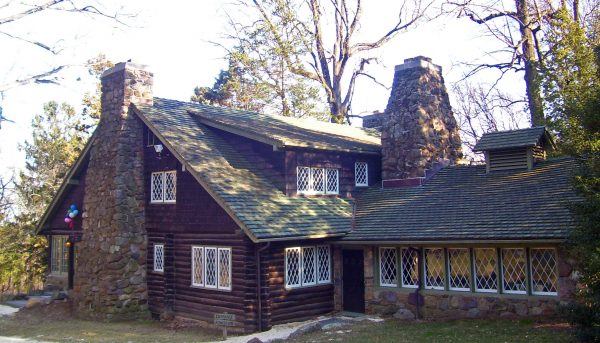Driving force behind Mission Furniture
Gustav Stickley (1858 – 1942) was an American craftsman, furniture designer, and manufacturer. He was born in the Wisconsin town of Osceola. Albert, Charles, John George, and Leopold Stickley were his brothers.
Training
As a stonemason, he learned from his father.
Biography
His German name, Stoeckel, was anglicised to Stickley by his émigré parents. In Pennsylvania, he worked in his uncle’s chair manufacturing with his brothers. Stickley brothers Gustav, Charles, Albert, Leopold, and John George all worked in the furniture industry.

Separate companies were formed over time to produce what became known as Craftsman or Mission furniture. Stickley Brothers, the first firm, was founded in Binghamton, New York, in the 1880s by Charles, Albert, and Gustav Stickley. Initially, they marketed popular furniture and, later, pieces that they developed and manufactured.
Gustav Stickley Chair
Gustav Stickley chairs are revered as iconic symbols of craftsmanship and the Mission furniture style. These chairs embody Stickley’s commitment to quality and attention to detail. With their clean lines, solid construction, and handcrafted finishes, they exemplify the essence of the Mission aesthetic. From the exposed joinery to the natural wood tones, every element of a Gustav Stickley chair showcases the skilled craftsmanship and dedication to artistry. Whether it’s an armchair or a side chair, upholstered or unupholstered, each variation of Stickley chairs reflects the timeless appeal of their design.
Gustav Stickley Designed Electric Chair
Gustav Stickley found himself in competition with his brothers. In 1890, his Craftsman oak electric chair was put at the New York State prison in Auburn for state corporal punishment. He had the most significant single influence on the American Arts and Crafts movement through the journal The Craftsman and his furniture manufacture in the early twentieth century. The periodical, which began in 1901, documented Stickley’s ideology by recording his home in Syracuse, New York, in 1902 and his Craftsman Farms project in Morris Plains, New Jersey, beginning in 1908.
Gustav Stickley Craftsman Farms Project
For Stickley’s United Crafts Workshop in Eastwood, New York, architect and designer Harvey Ellis designed the dwellings, furnishings, and wall decorations. The Craftsman Farms project was a utopian farm and school community developed in 1907 and first shown in 1908 as drawings and elevations for the Log House and cottages. The project was most likely completed in 1909. The farm and school were featured in five consecutive issues of The Craftsman from 1910 to 1912.




Sources
Byars, M., & Riley, T. (2004). The design encyclopedia. Laurence King Publishing.
You may also be interested in
Thomas Molesworth (1890 – 1977) an American furniture designer – Encyclopedia of Design
Thomas C. Molesworth (1890-1977) was an American furniture designer who helped pioneer the use of cowhide, horn, and natural wood to produce a distinctly Western style of furniture and accessories. Molesworth’s style was influenced by the Arts and Crafts Movement and the vernacular design elements of ranches and farms in western America.
Sam Maloof (1916 – 2009) American furniture designer and maker – Encyclopedia of Design
Sam Maloof (1916 – 2009), whose simple, elegant wooden furniture he designed and handmade, made him a central figure in the American post-war craft movement. His studio was located in Alto Loma, near Claremont, CA. In high-quality woods (black walnut, ebony, rosewood, teak), Maloof’s sculpted furniture was distinguished by fine craftsmanship and comfort for the customer.
❤️ Receive our newsletter
Related Articles
Discover more from Encyclopedia of Design
Subscribe to get the latest posts sent to your email.
